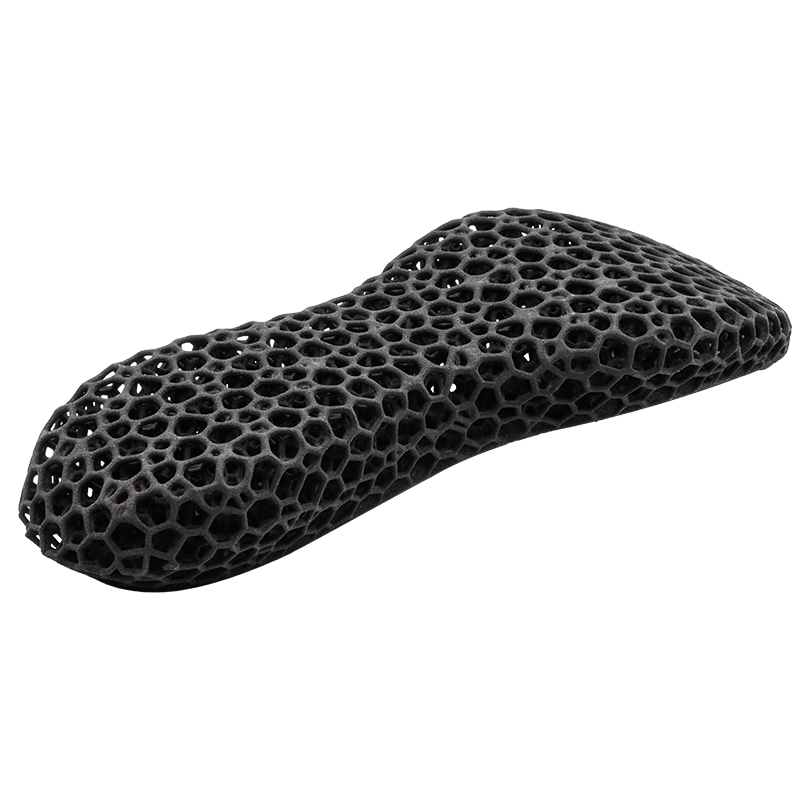SLS, or Selective Laser Sintering, is a common 3D printing technology based on a powder bed. It mainly utilizes the basic principle of high-temperature sintering of powder materials under infrared laser irradiation, and the computer controls the light source positioning device to achieve precise positioning. By repeating the process of laying out powder and melting where needed, the parts are built up in the powder bed.
SLS materials are used in a wide range of applications. Theoretically, any powder material that can form inter-atomic bonds when heated can be used as an SLS material, and the most commonly used material is the familiar and inexpensive nylon material, which we also called PA12 (Polyamide 12).
Those who know about SLA 3D printing will know that this technology requires support structures while printing, so after the printing process is over, there are post-processing procedures such as removing the support, sanding, and so on. In SLS 3D printing, on the other hand, the powder used for printing is the material as well as the support. So SLS has a high material utilization rate because the powder left after printing can be recycled and used again.
Despite the fact that SLS does not have a high material price and has a high material utilization rate, why is it still an expensive printing service? There are several major factors:
1.High cost of SLS machines. Unlike FDM and SLA technologies that have desktop-level machines, currently SLS 3D printing equipment is only industrial-grade and is not suitable for general 3D printing enthusiasts or other small groups.
2. Although the material reuse rate of SLS 3D printing is very high, its material consumption rate is also very high, which leads to an expensive material cost, too.
3. SLS parts have a grainy surface finish and internal porosity , requiring a series of complex post-processing procedures, which increase labor costs and the costs of post-processing tools and materials in the process.
4. The quality of SLS parts is greatly affected by the powder, and it is not easy to improve.
5. The design requirements for 3D files in SLS are demanding, and generally some long parts or parts with small holes cannot be accurately printed by SLS because they are prone to warping and oversintering.
Similarly, SLS 3D printing has very obvious advantages. As mentioned earlier, the material price of SLS is low, furthermore, it has an outstanding material utilization rate; in addition, the nylon material used in SLS also has high strength and strong toughness, as well as better corrosion resistance, and the sintered parts can be used for a long time. So SLS is also one of the more cost-effective solutions for small batch production.







